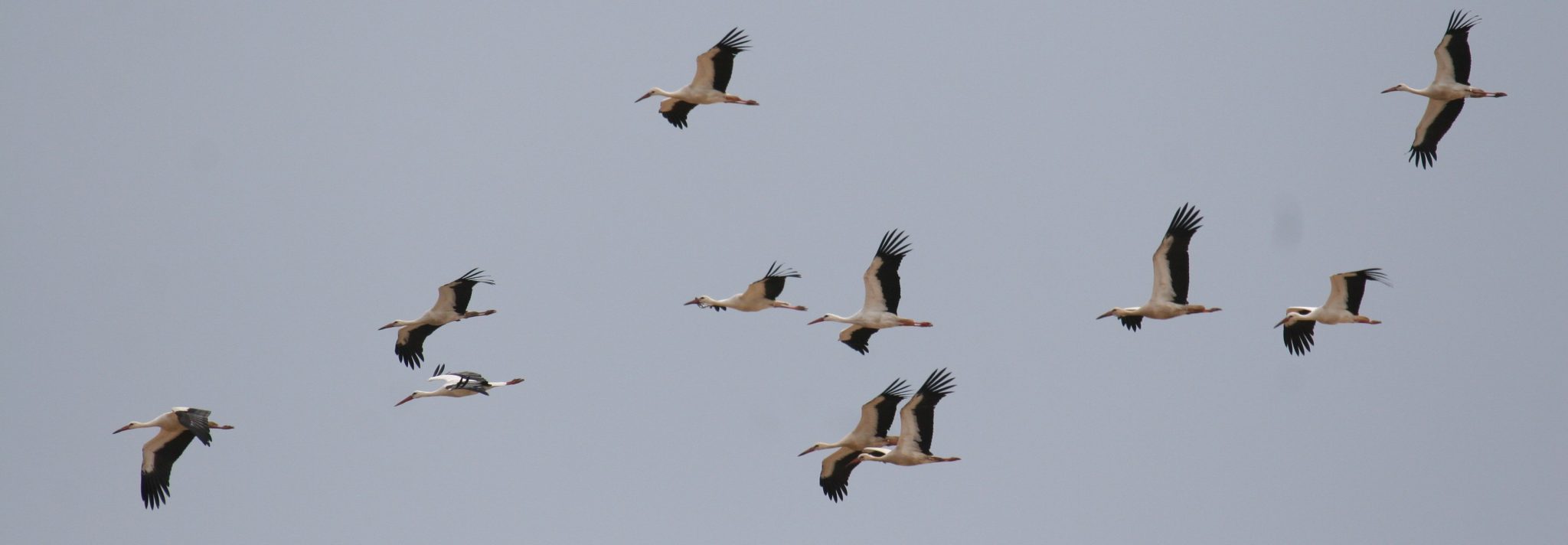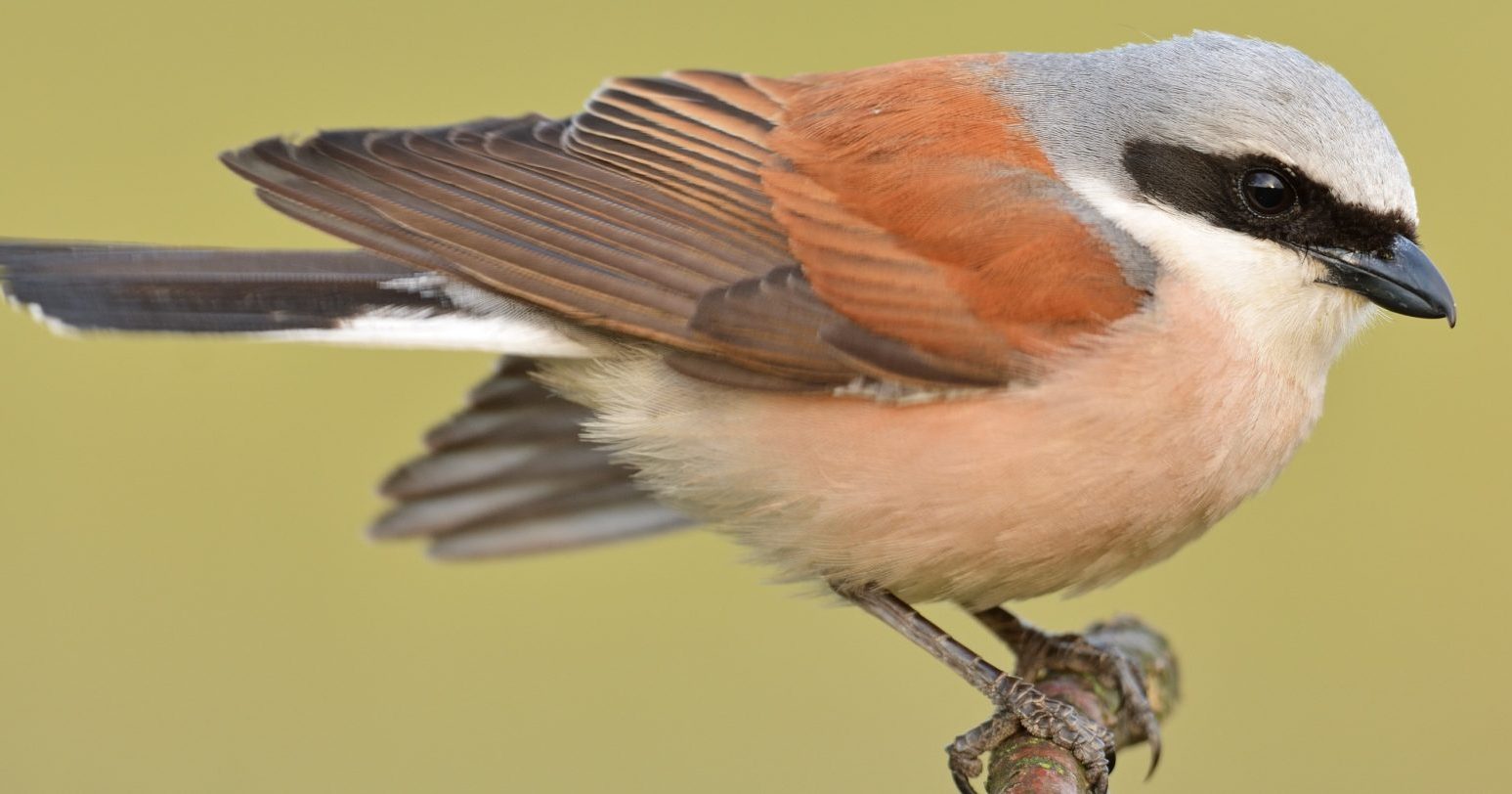Migratory bird of the month: Black-tailed Godwit
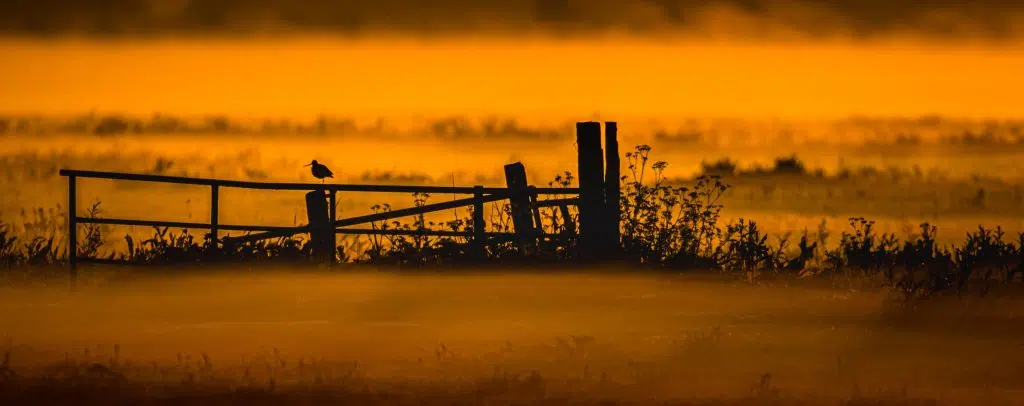
The Black-tailed Godwit, known for its impressive long-distance migrations, breeds across Northwestern Europe, including countries like The Netherlands, Germany, Belgium, and Poland.
Key info
- Latin name: Limosa limosa
- Global Red List Category: Near Threatened
- Global population: The estimated global population is between 614,000-809,000 individuals.[1] In Europe, the population is estimated to number 102,000-149,000 pairs (including 25,000 pairs in Iceland)[2]
- Migration Route: The godwit breeds from Iceland all the way through Europe and Siberia to parts of Central Asia. It has a diverse migration pattern spanning the Indian subcontinent, Australia, West Africa, and parts of Western Europe.
Description
- Wingspan: Approximately 70-80 cm
- Life span: Up to 20 years
- Distinct features: Long, straight bill, long neck and legs, white rump, and black tail. During the breeding season, the male boasts a rich brick-red coloration, while the female exhibits a more subtle red tone. During winter, both are brownish grey.
- Favourite food: Insects, crustaceans, molluscs, and small fish found in wetlands
- Top Speed: Capable of reaching speeds up to 95 km/h during migration
- Habitat: Breeds in wet grasslands and meadows, and winters in coastal estuaries, mudflats, and lagoons
Flight for Survival
The Black-tailed Godwit, known for its impressive long-distance migrations, breeds across Northwestern Europe, including countries like The Netherlands, Germany, Belgium, and Poland. During winter, these elegant birds journey southward, finding refuge in Southern Europe (such as the Iberian Peninsula, Greece, and the Black Sea coast) as well as North and sub-Saharan Africa. Notably, Icelandic and nominate godwits exhibit separate migration routes.
Sadly, the bird population continues to decline. Human activities pose significant threats to their existence. Wetland drainage, agricultural changes, and fertilizer use endanger their habitats, while pollution, climate change, and livestock grazing further exacerbate the challenges they face. Globally, the Black-tailed Godwit is classified as Near Threatened due to habitat loss and degradation. Efforts to safeguard their habitats during breeding and migration are crucial for their long-term survival.
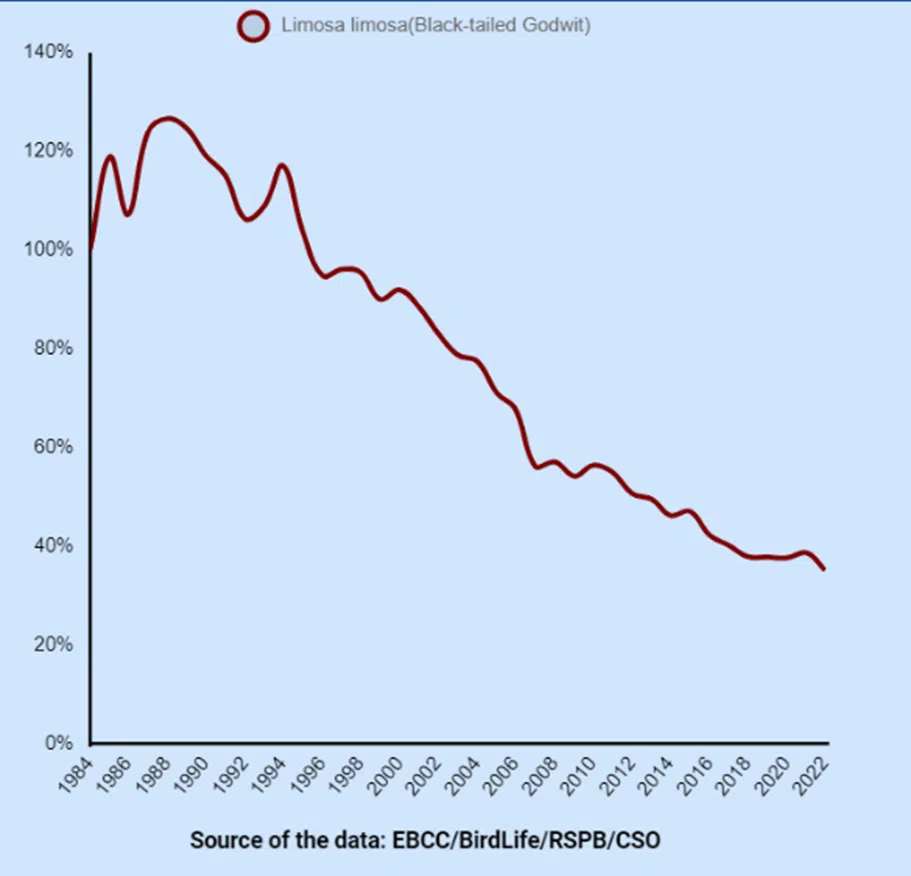
BirdLife’s work
To bolster the recovery of the Black-tailed Godwit, the BirdLife Partnership spearheads a multifaceted conservation effort. This includes safeguarding crucial habitats, advocating for policies to address threats, and conducting research to enhance our understanding and conservation strategies for this species.
Given that agriculture poses a significant threat to the godwit, we are diligently collaborating with partners across Europe to reform the Common Agricultural Policy (CAP), the EU’s farming subsidies system. Currently, this system incentivizes farm size over environmental stewardship. We are advocating for a policy overhaul to ensure a harmonious coexistence between nature and farming.
The Black-tailed Godwit holds a special place in the heart of Vogelbescherming Nederland, our Dutch Partner, as it is their national bird. 85% of the EU godwits breed in the Netherlands. The country’s expansive dairy industry poses a significant threat to the bird’s survival. Through their “Save the Rich Meadow” campaign, our Partner advocates for improved agricultural policies and promote nature-friendly dairy products. They also establish core areas for meadow birds, conduct vital research, and collaborate with farmers to showcase sustainable practices.
We also work tirelessly to protect critical habitats for the godwit outside of the Netherlands. Thanks to the vigorous advocacy of our Partner SEO/BirdLife Spain the iconic Doñana wetland, which was facing great risks of completely drying up, has now a chance to be reborn. Following a joint agreement between the Spanish and Andalusian governments last November, destructive agricultural practices around this UNESCO Heritage site will hopefully cease. The expansion of irrigable land surrounding the wetland will be halted, ensuring its preservation for future generations.
Similarly, our Portuguese Partner SPEA has been actively opposing a project to expand the Lisbon Airport, which threatens the Tagus estuary, the country’s vital wetland and a crucial stopover site for migratory birds, including the Black-tailed Godwit. SPEA, alongside seven other Portuguese NGOs, has filed a court action with the Lisbon Administrative Court.
Our Partners play a pivotal role in data collection on the godwit’s status and participate in the International Waterbird Census, an annual winter count organized by Wetlands International across 143 countries. Together with NABU (BirdLife Germany), RSPB (BirdLife UK), VBN (BirdLife Netherlands), and SOF (BirdLife Sweden), we have compiled the International Multi-Species Action Plan for the Conservation of Breeding Waders in Wet Grassland Habitats in Europe.
Interesting facts
Check out this video to listen to their unique sound!
No need for a cozy nest
Black-tailed godwits lay their eggs directly on the ground amidst the grass of moist meadows. While this adaptation aligns with their natural environment, it also exposes them to risks. Predators like foxes, martens, and large birds pose a threat to their vulnerable nests. Agricultural activities such as mowing can be very dangerous, and careful timing of these activities is essential for the survival of the godwit’s eggs and chicks.
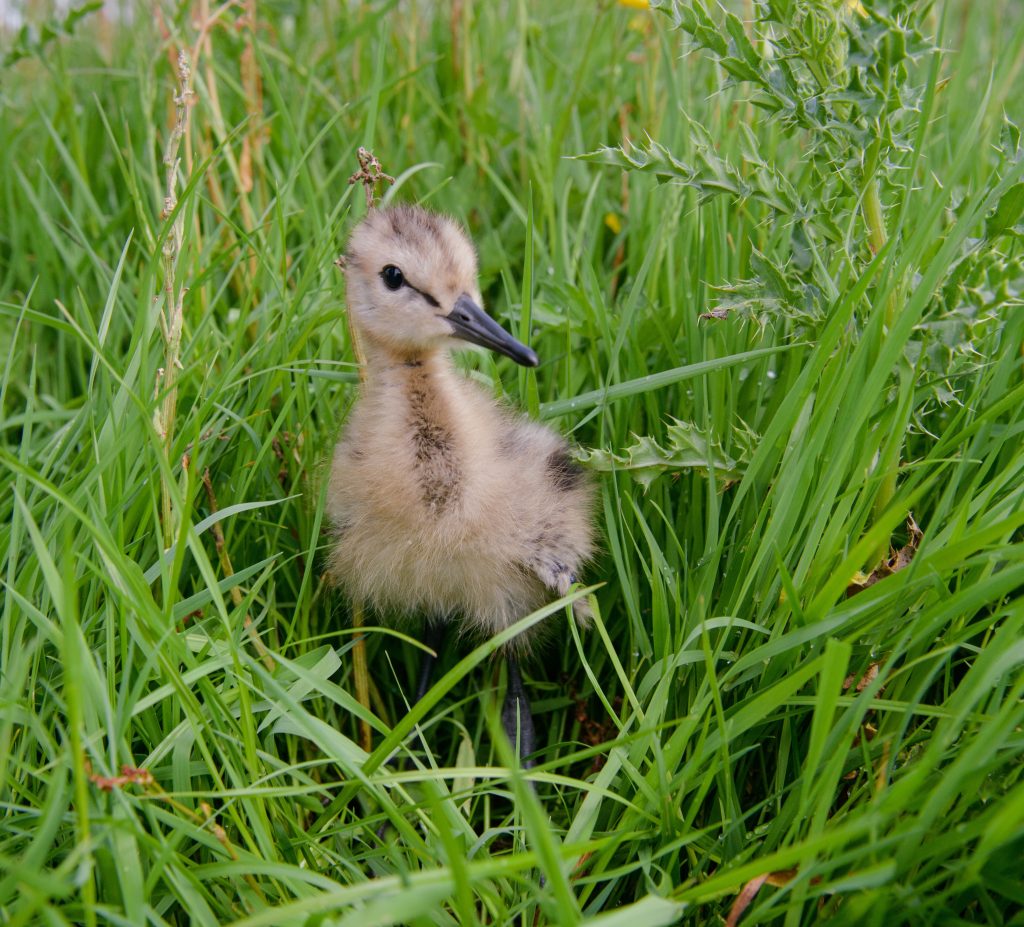
Mud detectives
The bill of the Black-tailed godwit is long, slender, and slightly upturned, perfect for probing the muddy ground of their wet grassland habitat. The tip is particularly sensitive, allowing the godwit to detect prey beneath the surface of the mud, even without being able to see them. This enables them to forage efficiently, even in the deeper layers of mud. Additionally, the bill is strong enough to dig through the muddy ground but flexible enough to grasp prey without damaging it.
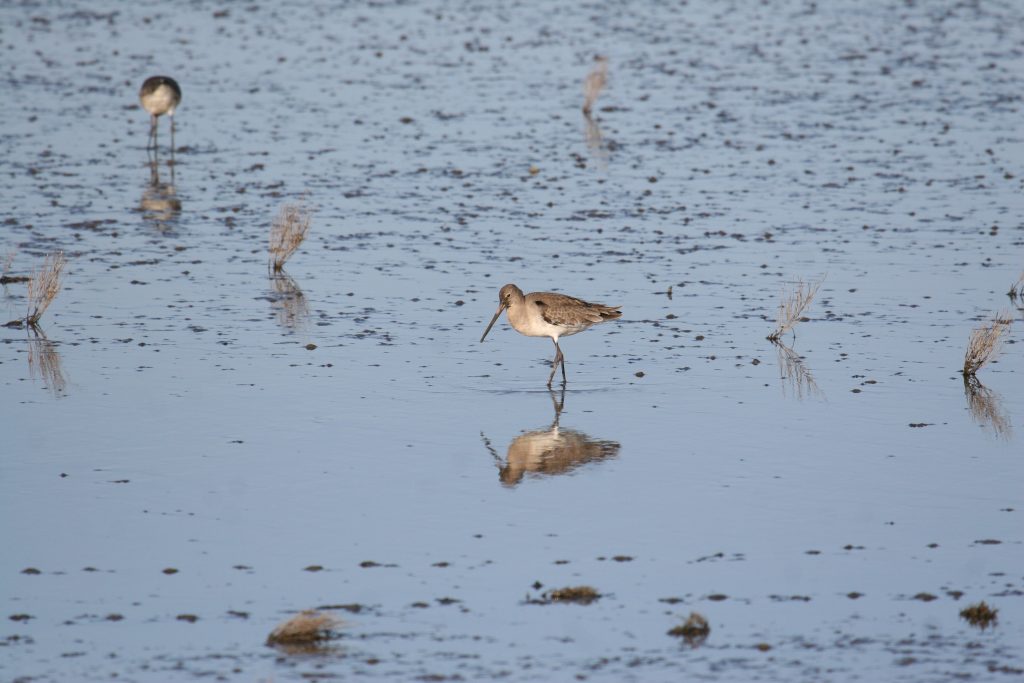
[1] Wetlands International 2016
[2] BirdLife International 2024, Species factsheet: Limosa limosa
[3] https://pecbms.info/trends-and-indicators/species-trends/sort/taxonomy/all/yes/species/limosa-limosa/confidential/yes/?search=Limosa%20limosa
Cover photo by Stijn Smits
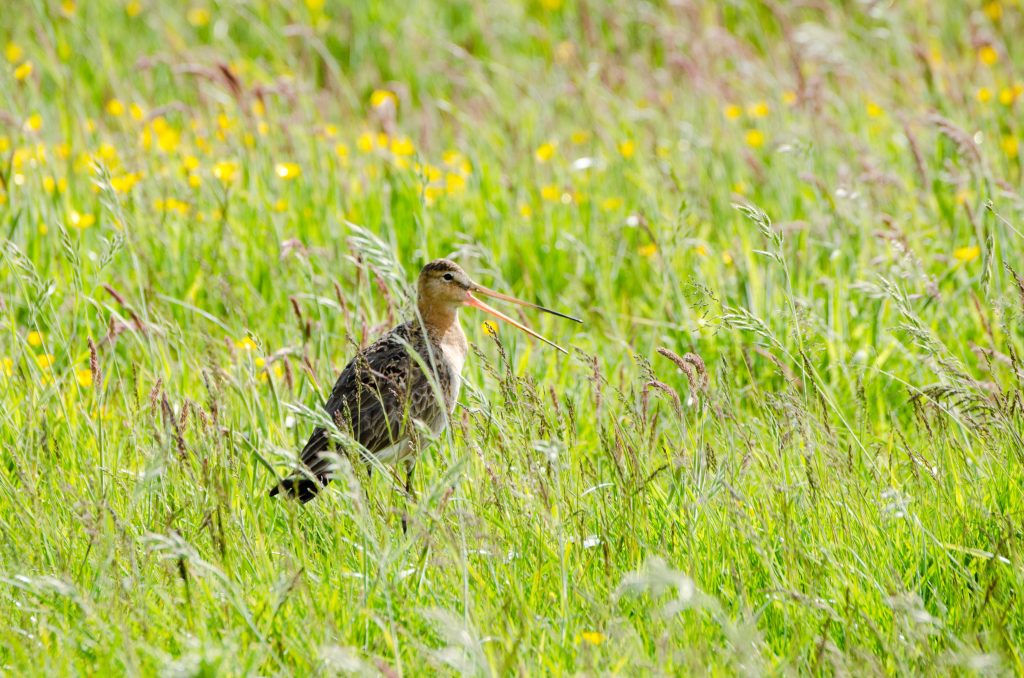
You might be interested in:
 | Stichting BirdLife Europe gratefully acknowledges financial support from the European Commission. All content and opinions expressed on these pages are solely those of Stichting BirdLife Europe. The European Commission is not responsible for any use that may be made of the information it contains. |
